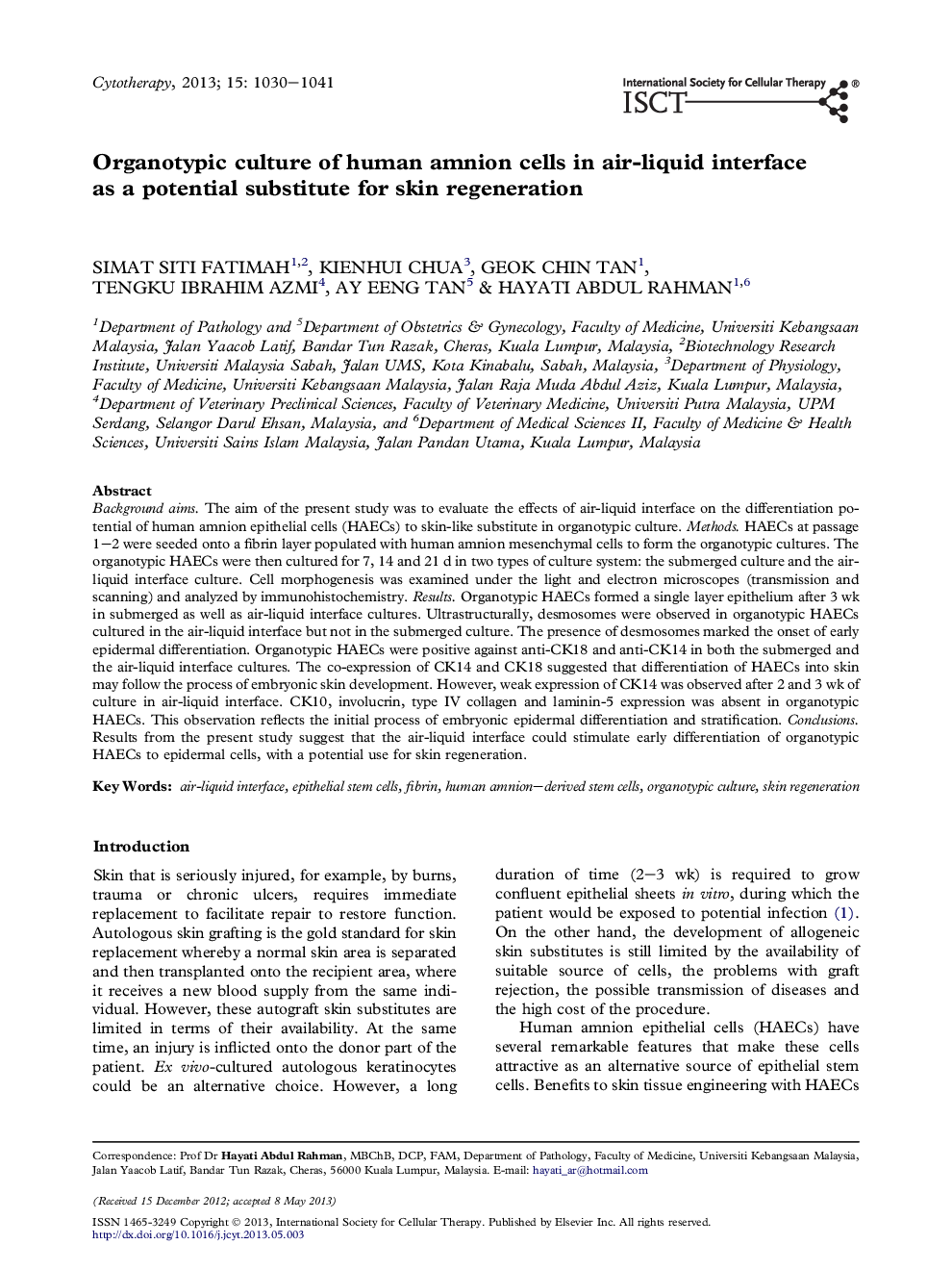| Article ID | Journal | Published Year | Pages | File Type |
|---|---|---|---|---|
| 2171290 | Cytotherapy | 2013 | 12 Pages |
Background aimsThe aim of the present study was to evaluate the effects of air-liquid interface on the differentiation potential of human amnion epithelial cells (HAECs) to skin-like substitute in organotypic culture.MethodsHAECs at passage 1–2 were seeded onto a fibrin layer populated with human amnion mesenchymal cells to form the organotypic cultures. The organotypic HAECs were then cultured for 7, 14 and 21 d in two types of culture system: the submerged culture and the air-liquid interface culture. Cell morphogenesis was examined under the light and electron microscopes (transmission and scanning) and analyzed by immunohistochemistry.ResultsOrganotypic HAECs formed a single layer epithelium after 3 wk in submerged as well as air-liquid interface cultures. Ultrastructurally, desmosomes were observed in organotypic HAECs cultured in the air-liquid interface but not in the submerged culture. The presence of desmosomes marked the onset of early epidermal differentiation. Organotypic HAECs were positive against anti-CK18 and anti-CK14 in both the submerged and the air-liquid interface cultures. The co-expression of CK14 and CK18 suggested that differentiation of HAECs into skin may follow the process of embryonic skin development. However, weak expression of CK14 was observed after 2 and 3 wk of culture in air-liquid interface. CK10, involucrin, type IV collagen and laminin-5 expression was absent in organotypic HAECs. This observation reflects the initial process of embryonic epidermal differentiation and stratification.ConclusionsResults from the present study suggest that the air-liquid interface could stimulate early differentiation of organotypic HAECs to epidermal cells, with a potential use for skin regeneration.
